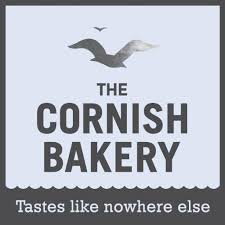Title Page
-
Conducted on
-
Prepared by
-
Boards Safe Assessment
TCS Foods
-
Are foods (chicken) that require/time-temperature control for safety are cooked to proper internal temperatures( 165°F or higher)?
-
Are TCS food items being maintained at 40°F or lower?
-
Are hot foods that require time/temperature control for safety are maintained at 140°F or above?
-
Is the chicken noodle soup being maintained at being maintained at 140°F?
-
Are foods (non-chicken) that require/time-temperature control for safety are cooked to proper internal temperatures; microwaved foods to 165°F?
-
Is cooldown of TCS foods: 140°F to 70°F or below within 2 hours and 140°F to 40°F or below within 6 hours.
Food Contact Surfaces
-
Foods are not contaminated. Foods and food-contact surfaces are protected from potential microbiological, physical and chemical hazards. Examples of such hazards include but are not limited to: raw animal products above ready-to-eat foods, commingling raw animal species, thumbtacks, chemicals, medicines or first aid supplies stored above food or food-contact surfaces. When tasting food during preparation, utensils are used only once.
-
Food-contact surfaces are properly cleaned and sanitized (at least every 4 hours during continuous use at room temperature with foods that require time/temperature control for safety (TCS)).
-
Food-contact surfaces of equipment, small wares and utensils are durable, non-toxic, and made of safe materials.
-
Chemical sanitizer solutions are maintained at proper concentration per label instructions.
-
Is the chicken tortilla soup maintained at 140°F?
-
Are foods that require time/temperature control for safety (TCS) held or sold past expiration date?
-
Foods are from commercial suppliers. Foods and packaging are in sound condition.
-
No bare hand contact occurs with ready-to-eat foods. Disposable gloves are worn over other types of gloves (cut-resistant gloves, cloth gloves, etc.) when handling ready-to-eat foods. Yellow food service gloves are worn when handling raw chicken. Clear food service gloves worn when handling rinsed produce.
-
Pest prevention program is effective for flies inside the restaurant and birds outside the restaurant.
-
Hand washing facilities in food handling areas are maintained clean at all times; supplied with readily available hot water, soap, disposable towels or heated-air hand drying device; and signed to remind employees to wash hands. Handwashing facilities are located convenient to food handling and warewashing areas, and are maintained accessible at all times. Handwashing facilities in food handling areas are used only for that purpose and only designated handwashing sinks are used for handwashing.
-
Medium Boards/Cook-line/Warming Units Food-contact surfaces equipment, smallwares and utensils are smooth, easily cleanable, and in good condition.
-
Are refrigerated units equipped with accurate thermometers that are easily viewable?
-
Are chemical containers, such as sanitizer buckets and bottles, properly labeled with the common name of the product?
-
Gloves are changed whenever damaged or torn. Fingernails are kept trimmed. Fingernail polish is worn in good taste and only in guest service areas.
-
Are separate cloths used for wiping food contact and nonfood contact surfaces?
-
Are nonfood contact surfaces of equipment, utensils and smallwares for the preparation clean (not including reach-in coolers/freezers)?
-
Are gaskets of reach-in coolers and freezers properly cleaned and in good condition?
-
Are nonfood contact surfaces durable and in good condition (not including reach-in coolers/freezers)?
-
Is the handle of the scoop observed stored above or outside of the the product?
-
Floors, walls, and ceilings are free of excessive dust, debris and standing water.
-
Are door handles, doors, and exterior surfaces of reach-in coolers/freezers properly cleaned and in good condition?
-
Are in-use utensils observed stored at room temperature in containers of sanitizer?
-
Are shelves of reach-coolers and freezers properly cleaned and in good condition?
Employee
-
Is uniform/outer clothing clean?
-
Are hair restraints used by Team Members working near exposed food and food contact surfaces?
-
Is jewelry on the hands and wrists limited to a plain ring with no set stones?
-
Eating, drinking and tobacco use are restricted to nonfood areas. Drinking is allowed from closed containers, such as a cup with a lid and straw, handled to prevent contamination of hands or food contact surfaces. Personal items are properly stored in designated areas away from food, utensils and equipment.
Vent/Maintenance/Pest Prevention
-
Are vents clean and free of dust build-up and adequate?
-
Are lights adequate for cleaning/food handling task and properly shielded above food, food contact surfaces, and packaged food if package integrity could be affected by broken glass?
-
Pest control devices are working properly and installed so that they will not contaminate food or food-contact surfaces. Catch trays and glue boards are changed as necessary.
-
Are interior garbage containers cleaned and emptied as needed?
-
Are exhaust hoods clean and free of soil or excessive dust build-up?
-
Pest prevention program is effective. (Rodents, live cockroaches, bird in the restaurant, pests in food)
Chemicals
-
Are wiping cloths kept clean and dry or immersed in properly diluted sanitizing solutions?











